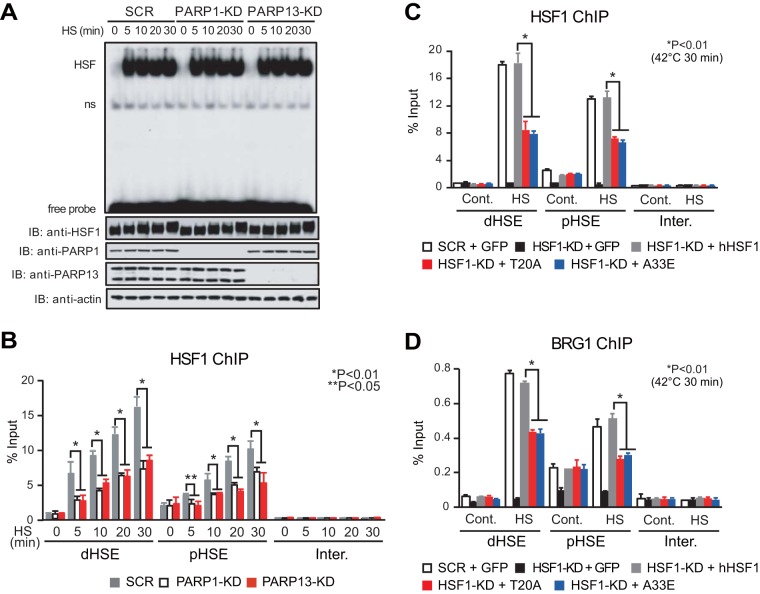FIG 3.
PARP1 and PARP13 facilitate the binding of HSF1 to the HSEs during heat shock. (A) HeLa cells in which PARP1 or PARP13 had been knocked down were treated with a heat shock for the indicated periods. (Top) Whole-cell extracts were prepared and were subjected to an electrophoretic mobility shift assay using a 32P-labeled ideal HSE oligonucleotide. HSF, bands of HSE–HSF1 complex; ns, nonspecific bands; free probe, unbound HSE oligonucleotides. (Bottom) Western blotting (IB) was performed. (B) Cells were treated as described for panel A, and ChIP-qPCR of HSF1 on the pHSE, the dHSE, and an intergenic region (Inter.) was performed (n = 3). (C) Cells in which endogenous HSF1 had been replaced with GFP, wild-type hHSF1, or mutated hHSF1 were heat shocked (42°C for 30 min). ChIP-qPCR of HSF1 was performed (n = 3). (D) Cells were treated, and ChIP-qPCR of BRG1 was performed, as described for panel C (n = 3). Analysis for statistically significant differences was performed using Student's t test.

